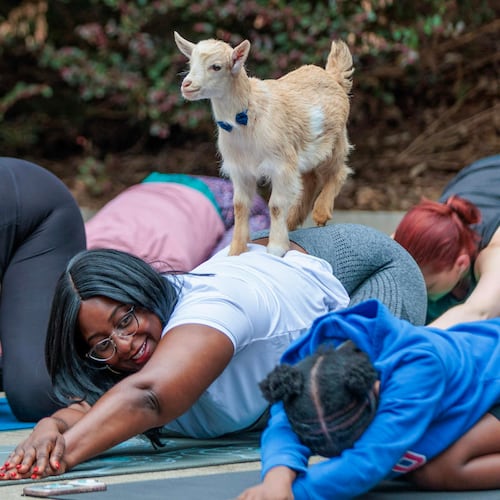This is the time of year when we birdwatchers come down with a nagging complication of spring fever. It’s called “warbler neck," an ache caused by constantly peering up at treetops to catch glimpses of those dazzling little sprites of spring, the warblers.
Warblers, of course, aren’t the only neo-tropical migratory birds arriving now from winter homes in Latin America. Also coming in are waves of tanagers, thrushes, vireos, flycatchers, grosbeaks, buntings, ruby-throated hummingbirds and more. But the warblers seem to grab most of the bird-watching crowd’s attention this time of year, when spring migration is most intense.
Some 30 warbler species -- sporting their strikingly beautiful spring plumage and belting out their sparkling songs -- pass through Georgia during April and May. Many come from the tropics of Central America. Some, such as the cerulean warbler, come from as far south as Peru.
Although weighing only as much as two nickels each, many migrating warblers fly in huge mixed flocks hundreds of miles nonstop over the Gulf of Mexico to reach North America. After making landfall, they continue their journey overland, flying at night and stopping during the day to rest, refuel and avoid predators. One of their favorite stopovers is Kennesaw Mountain in Cobb County.
Some will nest in Georgia, but most are here today and gone tomorrow, flying on to breeding grounds as far north as Manitoba and Labrador. Among the warblers that nest in Georgia are the prothonotary, Swainson’s, hooded, worm-eating, cerulean, black and white, prairie, yellow-throated and yellow warblers; ovenbird; American redstart; Northern parula; and Louisiana water thrush. The pine warbler is about the only warbler that resides in Georgia year-round.
Warblers are ecologically important in nature and to humans. As they move north in spring, they gobble up tons of insects, especially caterpillars and other larvae that, if left unchecked, would devastate newly emerging spring foliage. Since a large proportion of the insects and larvae populate the crowns of leafting-out tree, the warblers go up there to feed -- thus accounting for “warbler neck” among birders standing on the ground looking up at them.
One thing that draws birders to warblers in spring is the birds' amazing color variety -- patches of yellow, blue, red, orange, olive green, often bordered by black and white stripes. No wonder warblers are called the “butterflies of the bird world.” One of the most colorful is the bright yellow prothonotary warbler, so-named because its plumage resembled the yellow hoods worn by prothonotaries, high-ranking clerics in the Catholic Church. Even the black-and-white warbler, whose plumage is limited only to those two colors, has a striking pattern that makes it a stand-out in the bird world.
IN THE SKY: The moon will be full on Monday night. The bright planet Venus is low in the west just after sunset, says David Dundee, astronomer at Tellus Northwest Georgia Science Museum. Mars rises out of the east before sunset and sets in the west before dawn. Jupiter is low in the east just before sunrise. Saturn rises out of the east at sunset and is visible throughout the night. It will appear near the moon Sunday night.
About the Author
Keep Reading
The Latest
Featured

